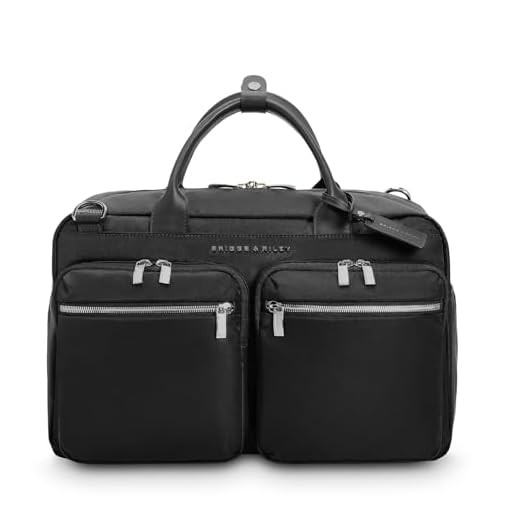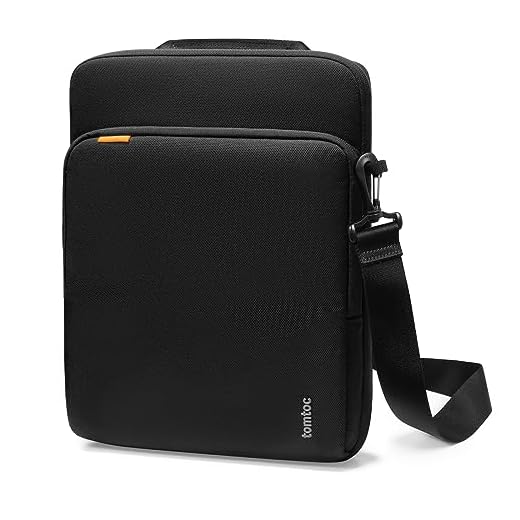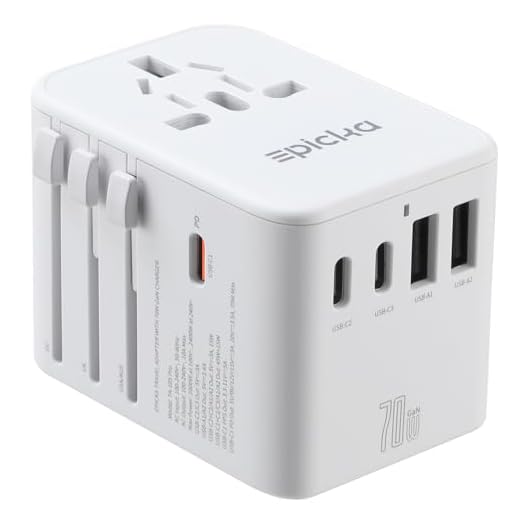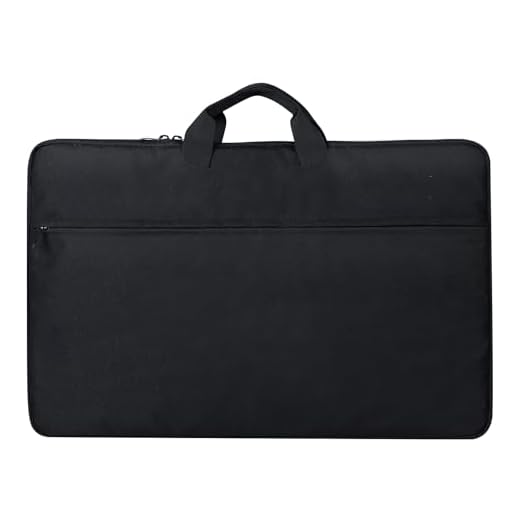







Always place your gadgets in an easily accessible compartment. Larger devices like laptops and tablets typically require separate screening at security checkpoints. Make sure these are fully charged, as security personnel may request to power them on during the inspection.
Limit the quantity of portable batteries and power banks. Regulations usually permit up to two spare lithium-ion batteries of a maximum capacity of 100 Wh each. For batteries exceeding this limit, prior approval from the airline is often necessary.
Ensure that smaller devices such as smartphones and e-readers, while allowed in most situations, are kept within your immediate vicinity to avoid any potential loss or damage. Pay attention to airline-specific regulations which may vary, particularly for international flights.
Keep in mind that certain countries may impose stricter rules regarding that kind of technology. It’s advisable to check the regulations prior to departure to avoid complications at customs or security checks.
Guidelines for Transporting Gadgets in Cabin Bags
All personal devices, including tablets, smartphones, laptops, and e-readers, must be stored in an easily accessible section of your bag for security checks. When passing through the checkpoint, remove these gadgets and place them in a separate bin for scanning.
Battery Regulations
Li-ion and lithium-polymer batteries are often restricted in checked baggage. Ensure that spare batteries are packed in your cabin bag, and maintain their insulation to prevent short-circuiting. Each battery should not exceed 100 watt-hours; otherwise, prior approval from the airline might be necessary.
Specific Airline Policies
Each airline may have unique rules regarding device limitations. Always consult the specific carrier’s regulations prior to your journey. Some airlines might restrict the use of larger laptops during takeoff and landing, so check for guidelines related to device operation during these critical phases.
Understanding Airline Regulations for Electronic Devices
Before packing, verify the specific airline’s rules regarding portable gadgets. Each carrier may have distinct requirements regarding their size, weight, and security procedures. Ensure compliance to avoid delays and additional scrutiny at checkpoints.
General Security Procedures
Most airlines require personal devices to be easily accessible during security inspections. Be prepared to remove larger gadgets, such as laptops and tablets, from bags. Place them in separate bins for screening. Smaller devices may remain in your bag, but it’s wise to confirm this with the airline.
Prohibited Devices
Certain technologies, like those with larger batteries, may face restrictions. Airlines often have strict policies regarding recreational drones and similar apparatus. Always check for updates on any prohibitions before traveling.
| Item Type | Allowed | Restrictions |
|---|---|---|
| Laptops | Yes | Must be removed for screening |
| Tablets | Yes | Must be removed for screening |
| Smartphones | Yes | Keep in bags unless instructed |
| Drones | Varies | Check local regulations |
Specific Restrictions on Size and Weight of Electronics
Each airline imposes distinct dimensions and weight limits for gadgets. Generally, most carriers allow devices under 7 inches to fit within personal item size restrictions, while larger units, like laptops and tablets, should remain below 22 x 14 x 9 inches. Weight criteria often cap around 15 to 20 pounds.
Some travel experts recommend measuring and weighing belongings before departure to ensure compliance. Additionally, certain airlines may restrict the total number of such devices; for instance, having more than two may prompt further inspection or even refusal of additional gadgets onboard.
If accessing top-quality baggage is on your checklist, consider locating the best luggage store in vancouver. They can provide spacious solutions for your travel needs.
Careful planning is necessary to avoid unexpected charges or checks at security. Frequent travelers often advise keeping all technological devices easily accessible to ensure a smooth passage through checkpoints.
Coverage of weather conditions with appropriate accessories can also be beneficial. Check out the best umbrella forchicago if inclement weather is in the forecast during your travels. This way, your tech remains safe from unexpected rain while being easy to transport.
Approved Electronic Items: What You Can Bring
Devices such as smartphones, tablets, and laptops are typically permitted in your personal carry bag. They must remain easily accessible for inspection during security checks. Make sure larger gadgets can be removed from cases when asked by security personnel.
Specific Categories of Allowed Gadgets
Chargers, e-readers, and portable gaming consoles may also be included in your travel setup. Ensure that charging cords are organized to avoid tangling, which can lead to delays during screening. Watch for voltage specifications if adapters are required, as some regions have different standards.
Smartwatches and Fitness Trackers
Wearable technology, like smartwatches and fitness trackers, is acceptable and should be worn or packed securely. If your device includes GPS or other communication capabilities, turn it off during the flight to comply with airline policies.
It is advisable to check specific airline regulations before your journey, as policies can differ. Keeping gadgets within the recommended dimensions ensures a smooth travel experience.
Security Screening Procedures for Electronics
During security checks, all gadgets must be removed from bags and placed in separate bins for screening. This includes laptops, tablets, and larger smart devices. Make sure these devices are powered on, as security personnel may request to see them functioning.
Preparation for Screening
Ensure that any batteries in devices are fully charged prior to arriving at the airport. If a device cannot be turned on due to a low battery, it may be subject to additional inspection, resulting in delays. For safety, check for local guidelines regarding the transportation of power banks and chargers.
Security Protocols
Be prepared for random additional screening, which may involve swabbing devices for traces of explosives. Cooperation with security staff during this process is mandatory. Remain aware of any specific regulations from the airline or country, as requirements can differ significantly.
Traveling with Batteries: Dos and Don’ts
Always store spare batteries in your carry-on. This practice minimizes fire risks associated with lithium batteries that can ignite if messed with. Keep batteries in their original packaging or use plastic bags to prevent terminal contact.
Do check the watt-hour rating for lithium-ion batteries. Most airlines permit batteries under 100 watt-hours without extra approval. Batteries ranging from 100 to 160 watt-hours might require airline clearance beforehand.
Approved Types of Batteries
Bring rechargeable batteries found in most personal gadgets. Alkaline batteries are also acceptable. However, avoid lithium batteries exceeding 160 watt-hours and any damaged or bulging batteries. They pose significant hazards. Dispose of damaged batteries properly.
Security Screening Guidelines
During security checks, inform agents about spare batteries if they exceed a certain size. Be prepared to remove them from your bag for separate screening. Familiarize yourself with specific airport procedures to facilitate a swift passage through security.
For those managing pets, consider exploring how to keep my dog from going under the fence for helpful tips.
Packing Tips for Safe Transport of Electronics
Ensure devices are powered off before packing to prevent accidental activation during transit.
Utilize protective cases for laptops, tablets, and smartphones. Soft cases provide minimal protection; opt for hard-shell cases for better security.
Remove any removable batteries from gadgets if possible and store them separately. This reduces the risk of short circuits and damage.
For fragile components, wrap them with bubble wrap or soft cloth to cushion against impacts.
Organize charging cables and peripherals using cable ties or pouches to avoid tangling and damage. Label cables for easier identification.
Consider using a padded backpack or a dedicated electronic carrier for added protection. Keep these carriers as your personal item for easy access.
Avoid placing heavy objects on top of sensitive equipment in your carry-on. Keep the weight evenly distributed.
Check battery regulations specific to airlines, especially for lithium-ion types. Some have limitations on watt-hour ratings.
Be prepared for security checks. Keep devices easily accessible as they may need to be removed from the bag for screening.
Lastly, use a travel insurance policy that covers damage to portable technology for peace of mind during travels.
FAQ:
Can I bring my laptop in my hand luggage on a flight?
Yes, you can bring your laptop in your hand luggage. Most airlines allow passengers to carry laptops as part of their cabin baggage. However, you may be required to remove the laptop from its case during security screening for separate inspection. Make sure to check with your specific airline for any additional policies or size restrictions regarding hand luggage.
Are there any restrictions on bringing electronic devices on international flights?
When traveling internationally, there are some restrictions on electronic devices, especially for flights to certain countries. For example, larger devices like laptops, tablets, and e-readers might need to be removed from your bag during security checks. Always verify the latest regulations with your airline and the security guidelines of your departing and arrival airports, as these can vary greatly depending on the region.
Can I take my smartphone and charger with me in my hand luggage?
Yes, you can take your smartphone and charger in your hand luggage. Most airlines permit passengers to carry personal electronic devices, including smartphones, tablets, and their corresponding chargers. Just remember that chargers may need to be taken out of your bag during security checks, and it’s advisable to keep your phone easily accessible for any potential inspections.
What about power banks? Can they be taken on a plane in hand luggage?
Power banks are generally allowed in hand luggage, but there are specific rules governing their capacity. Most airlines permit power banks with a capacity of up to 100 watt-hours (Wh) without any restrictions. If your power bank exceeds this limit, you may need to seek prior approval from the airline. It’s also important to keep the power bank easily accessible during security checks as it might require inspection. Always check your airline’s regulations for the most accurate information.









